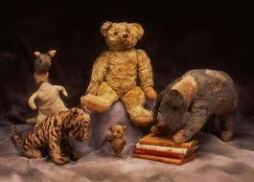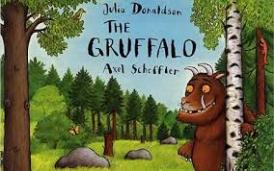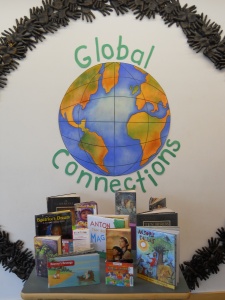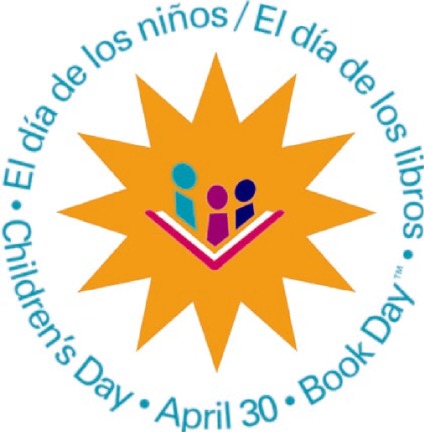Doris Gebel is the President of USBBY and Head of Children’s Services at the Northport-East Northport Public Library in Northport, NY.
The International and Global Literature Collection at Northport Library was launched in December 2012. This growing collection features children’s and young adult literature translated from a language other than English, imported from outside the USA, or written by an author with international roots.
Perhaps the best known literature from abroad comes to us from England. What American child does not know Winnie-the-Pooh (albeit thanks to Mr. Disney). 
Never the less, he is just one of the famous animal characters that populate British children’s literature. He stands proudly next to Paddington and the creatures of The Wind in the Willows. Little people are no strangers to British children’s literature beginning with the folk character of Tom Thumb to Jonathan Swift’s Lilliputians in Gulliver’s Travels to Norton’s Borrowers.
Britain stands among the first nations to institute the position of Children’s Laureate, naming Quentin Blake, Anne Fine, Anthony Browne (author and illustrator of that famous gorilla), Michael Morpurgo (author of nearly 100 books for young people and recently come to our attention by way of War Horse), and the current Julia Donaldson (if you don’t know the Gruffalo, check out Donaldson talking about her process http://www.youtube.com/watch?v=Pk2UFQSfndo and see the universal appeal of the story from Hong Kong http://www.youtube.com/watch?v=eIAU8eWL43w to Italy http://www.youtube.com/watch?v=jj0RYFLrMAs.)

Children of long ago cherished books like A Child’s Garden of Verse, Gulliver’s Travels, Robinson Crusoe or Treasure Island. From the more recent past there’s The Chronicles of Narnia, The Sword in the Stone, The Hobbit, Alice in Wonderland, Peter Pan, Mary Poppins, The likes of Joan Aiken, Leon Garfield, Rosemary Sutcliffe, Mollie Hunter, Helen Cresswell, Ian Serrraillier, Philppa Pearce, William Mayne and Roald Dahl stand in the halls of great British writers for children. Contemporary authors such as Eva Ibbotson, Phillip Pullman, Hillary McKay….dare I mention J.K Rowling are also currently popular in England.
And this doesn’t touch on the great tradition of picture books. Just consider the works of the great nineteenth century illustrators, Randolph Caldecott, Kate Greenaway and Beatrix Potter, to name just three.
Check out these popular Irish authors and illustrators: Roddy Doyle, Siobhán Parkinson, Oliver Jeffers, Shibhán Dowd, Eoin Colfer, P.J. Lynch.
We are all familiar with the Newbery and Caldecott awards and wait with anticipation for their announcement each January. The British equivalent of these awards are the Carnegie and Kate Greenaway Awards: http://www.carnegiegreenaway.org.uk/home/index.php Also of interest is the Guardian Prize http://www.guardian.co.uk/books/guardianchildrensfictionprize
Further Reading:
Chambers, Aidan. Tell Me: Children, Reading and Talk. Pembroke, 1996.
Townsend, John Rowe. Written for Children: an outline of English-Language children’s literature. Scarecrow Press, 1996.




